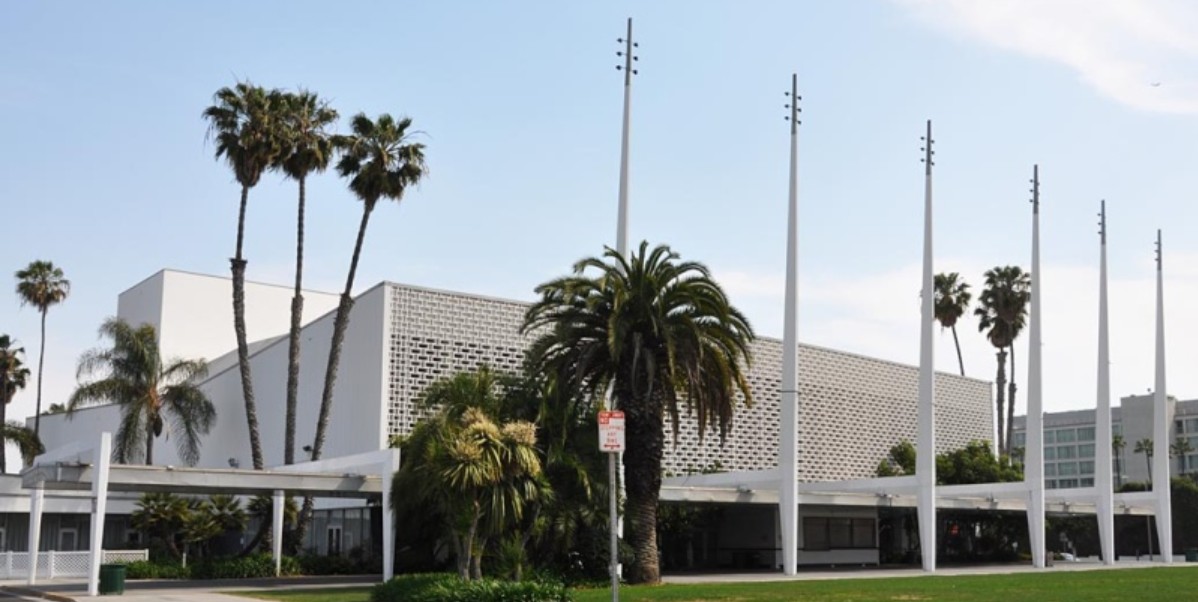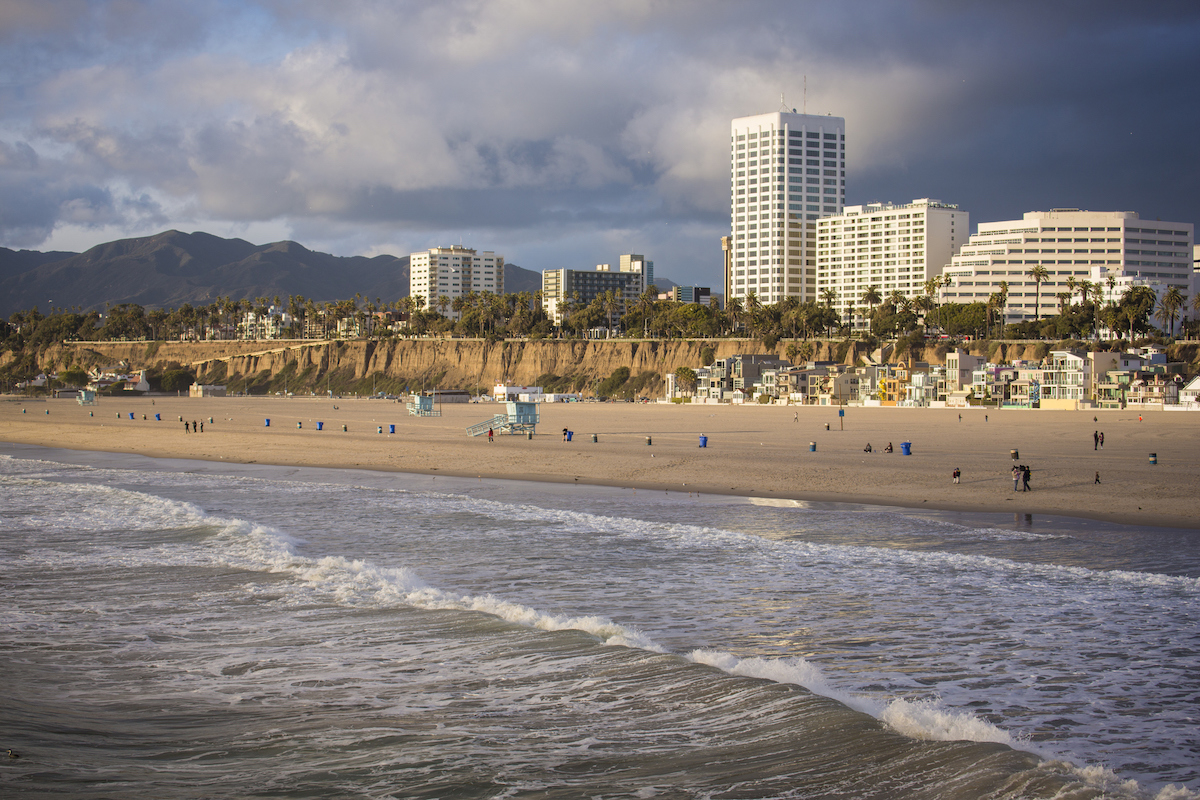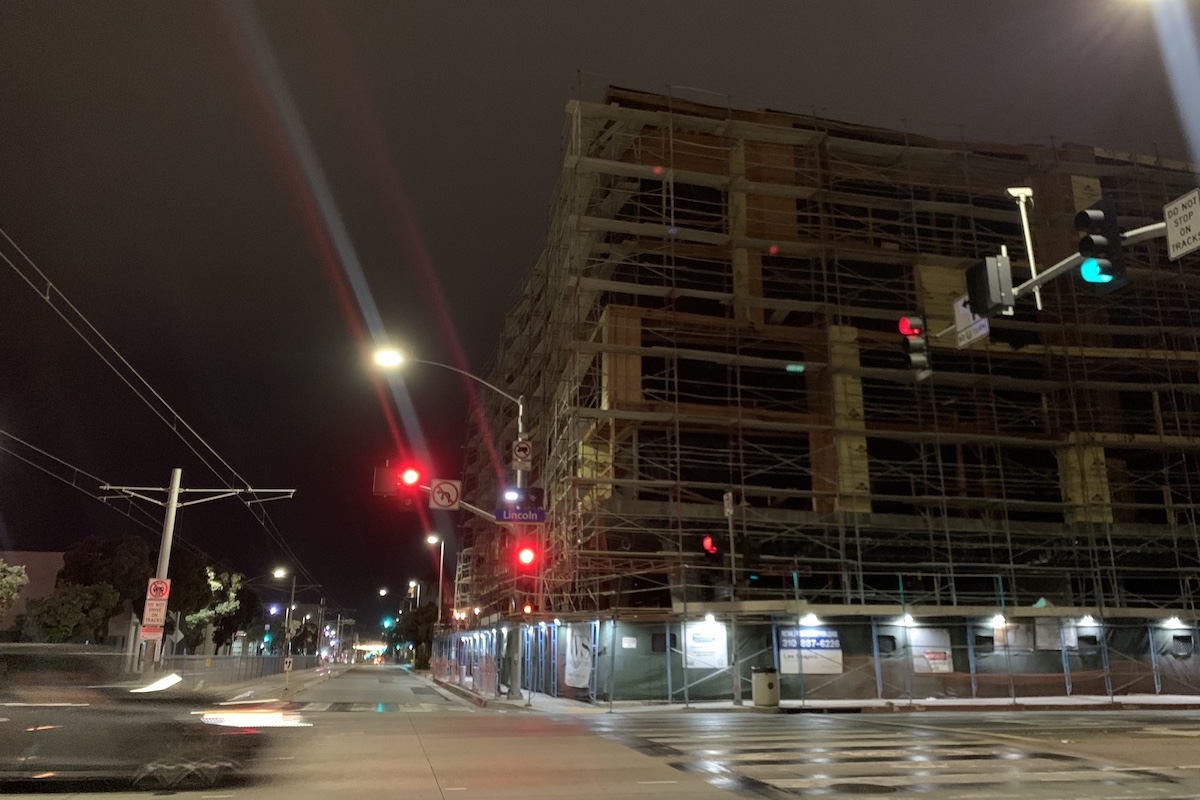
On January 28th, 2025, the City Council did a wise thing and agreed to continue the process, for 30 days, of negotiating an agreement to revitalize the abandoned Civic Center Auditorium. These negotiations had been moving forward for months (as expected for such a monumental endeavor) between the City of Santa Monica and the music consortium RPG (Revitalization Partners Group). That group was proposing to the City that it would enter into a long-term lease and provide the landmarked building with substantial improvements, including seismic upgrading, handicap accessibility, a modern sound system, acoustic and seating improvements, and other significant upgrades. When completed RPG would then operate it as a signature 21st century music venue.
This is a deal the City can’t and shouldn’t refuse. We now have a perfect storm for resurrecting this underperforming City asset. All the pieces are now in place to reactivate this building as a musical Mecca for the following reasons:
Location, location, location
This approximately 2500-seat 1958 auditorium is perfectly located as a music destination. First, it is at the end of two significant transit arteries (the 10 freeway and the expo line) making it easy access for the entire 10 million-person metropolis. It is also just 20 minutes from LAX likewise making it easy access for visiting performing stars and their adoring fans. Second it is surrounded on three sides by seven adjacent major hotels, again providing easy accommodations for visitors and performers. Third, the City’s beach culture and known close by amenities (e.g., the Pier, the 3rd Street promenade, etc.) will enhance and improve the visitor’s and performers’ experience, adding to their desire to attend musical events here. Fourth, there are no nearby mid-size performing arts venues (the Broad Auditorium seats only 500 people). And finally, the High School’s Barnum Hall and Greek theater are nearby (but far enough away to avoid sound interference) so that simultaneous music events could occur in a music festival format, drawing a larger audience base. There is virtually no midsize music venue with all these significant advantages in the LA basin.
A credible partner
The City ran the Civic Auditorium for 55 years before it closed in 2013 because the City did not have a way to raise the millions of dollars ($50M to$150M were being discussed) to do all the necessary improvements. Also, the City did not have the staff and skill set to manage and market a 21st-century music venue. After an extensive search and testing various alternatives, its taken a dozen years to find a credible partner who can manage such a turnaround for this important building. RPG is the best and probably only credible partner that the City can find. RPG are a demonstrably successful music team that has years of experience in revitalizing old venues for new music uses. As an example of their capabilities, while two of their principals lost their homes in the Palisades Fire in just two weeks, they still managed to stage Fire Aid, a dual-venue televised fundraising extravaganza that raised $100 million and counting for the victims of the fire. Such civic spirit, combined with decades of connections with hundreds of performers, even at a time of grievous personal loss, is an incredible testament to their qualifications and stamina needed for this project. We are fortunate to have them onboard.
A significant landmark
If the building has so many expensive deficiencies, why not just tear it down and sell the land? The City is broke and needs the money so why not just cash out now? Such an approach would make sense if this was, for example, just an ordinary warehouse or office building in some forgotten corner of the City, but this highly visible building has one of the most distinguished pedigrees of any building in Santa Monica. There are 6 criteria for a landmark in Santa Monica, but a building qualifies as a landmark if it meets only one of the criteria. Most buildings meet only one or two criteria. However, this building checks ALL six of the boxes:
- It signifies an important cultural element of the City: Hundreds of important cultural icons and groups played here, from Frank Sinatra to the Supremes, to the Beach Boys, to U2, to Billy Joel, to the Rolling Stones, to Ella Fitzgerald, to Bruce Springsteen, to Prince, the list goes on and on and on. If you saw the entire list of all music stars that have performed here it would blow your mind.
- It has artistic or aesthetic value: while a simple overall shape, the detailing and shape of the dynamic front spires, canopy, and screen wall capture the exuberance and optimism of midcentury modern architecture.
- It is identified with historic events or personages (see item#1 above): in the early sixties, this building, among its many roles, hosted the Academy Awards: it was the sexiest auditorium in the late ’50s and early ’60s to have such a signature event. It also symbolizes a boom period of Santa Monica’s history when we could still invest in symbolic and real support for the arts.
- It is valuable for the study of architectural trends, construction methods, aesthetic considerations of its time: the movable stage was revolutionary and was a significant multipurpose element, the entrance esplanade had a distinctive 50’s reflective pool (now covered), and the sculpted swooping side and arched roof are also symbolic (and low cost) ways of trying to break out of the box which has finally been fully achieved by subsequent architects like Frank Gehry among others.
- It is associated with a famous architect, Welton Becket’ (1902-1969), whose firm is the architect of record for auditorium, and he lived for a time in Santa Monica. His assistant Louis Naidorf was still alive last year at age 96 and worked on the auditorium as chief architect. Becket’s firm designed countless buildings, including the futuristic Theme Restaurant at LAX, the Capital Records Building in Hollywood (the first circular office building), the Mark Taper Forum, the Dorothy Chandler Pavilion etc., etc. At its time, Becket and Associates was one of the largest architectural firms in the world.
- It is a unique location and an established visual feature: it’s a cultural icon facing down its commercial counterpart, Santa Monica Place, at the other end of Main Street. It maintains pride of place anchoring confidently the South corner of our public Civic Center Complex.
Because it is such a super qualified distinguished landmark for our City, it is not surprising that it is also a Nationally Registered Landmark which brings with it potential tax advantages for the renovation process. This is an architectural gem of value not just to Santa Monica but to our whole country.
A beloved Icon
Everyone who has lived in Santa Monica for any length of time has some connection to this building. If you love live music, you may have had the awesome experience of seeing one or many of your stars perform there. If you were a music student in the public schools’ music programs, you might played in the annual school musician extravaganza called Stairway to the Stars. If you loved sports, you might have seen the American Fencing National championships there. If you loved cats, you might have gone to a cat show there. If you were interested in ecology, you might have browsed at an ecological products fair there. If you were interested in going to college, you might have attended a college fair in this auditorium. If you were interested in Civic issues, you might have participated in a meeting or workshop in the meeting rooms next to the main hall (while the main hall was closed for seismic reasons, the adjacent meeting rooms was considered seismically safe for use in the last 12 years). In other words, everyone has had an important experience of this building in its countless capacities. By providing so many rewarding experiences to so many for two-thirds of a century, it has become beloved by virtually all its visitors and residents. To lose this building would obliterate all those positive memories.
Too valuable to abandon
Some say the City is too poor to rehabilitate this cultural asset. That’s the beauty of the RPG proposal: the City does not have to pony up any money for the rehab since the RPG is funding the entire rehab. But even with no cash investment today, the City will still get all the long-term benefits of increased parking fees, sales taxes, hotel occupancy taxes, business taxes, and advertising value from the increased business activity of having a functioning iconic music venue in its center. Those who are considering selling the land and demolishing it (if at all legal) would have to consider not just the irreparable loss of this icon but also the destructive impact to all landmarks, as they now would be all consequently endangered. Destroying a nationally registered landmark when a viable path for its rehabilitation is already here would be snatching defeat from the jaws of victory and will make Santa Monica a cultural pariah. The resurrection of the Civic Auditorium is supported by many individuals and groups, including but not limited to Save the Civic and the Santa Monica Conservancy.
So this is a significant local and national landmark, at a great location, with a credible rehabilitation partner, and beloved by all: it is now time for the City Council to finish the job ASAP: conclude the negotiations with RPG and start the process envisioned in the negotiated agreement to bring the Civic back to life. We are so close to giving this building a new life. Now is not the time to vacillate: It is time to Bring Back the Music
You can contact your City Council members individually to advocate for this issue at
https://www.smgov.net/departments/council/content.aspx?id=13705
By Mario Fonda-Bonardi
S.M.a.r.t Santa Monica Architects for a Responsible Tomorrow
Robert H. Taylor AIA, Architect, Dan Jansenson, Architect & Building and Fire-Life Safety Commission, Jack Hillbrand AIA Architect & Landmarks Commissioner, Samuel Tolkin Architect & Planning Commissioner, Mario Fonda-Bonardi AIA Phil Brock former mayor &, Michael Jolly, AIR-CRE.
For previous articles, see www.santamonicaarch.wordpress.com/writing













